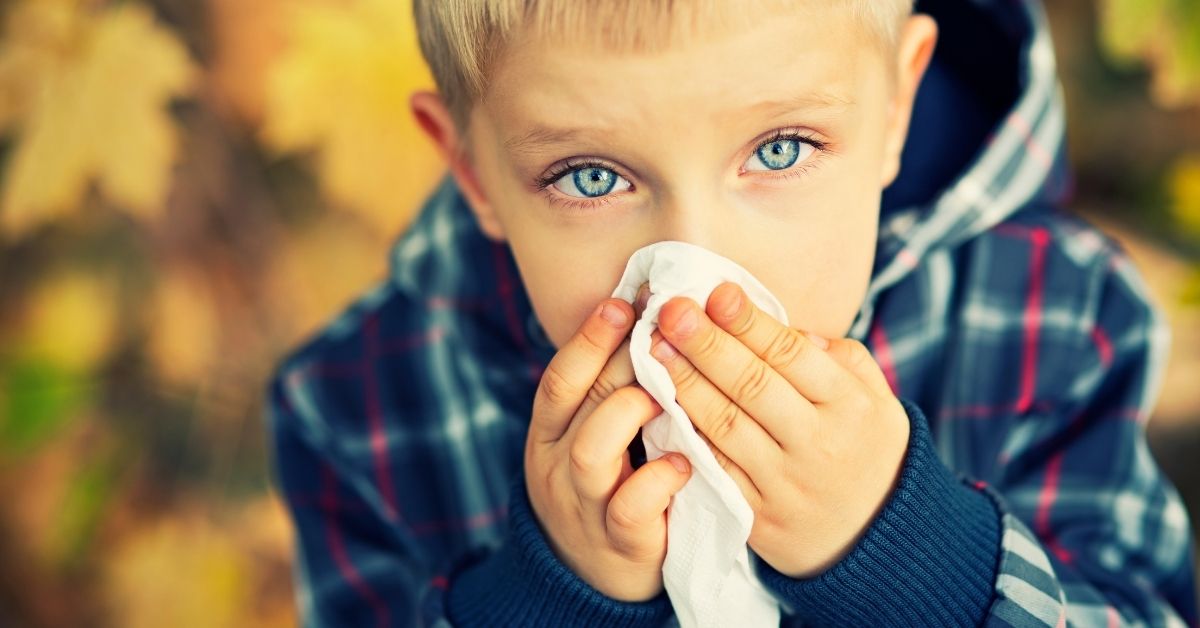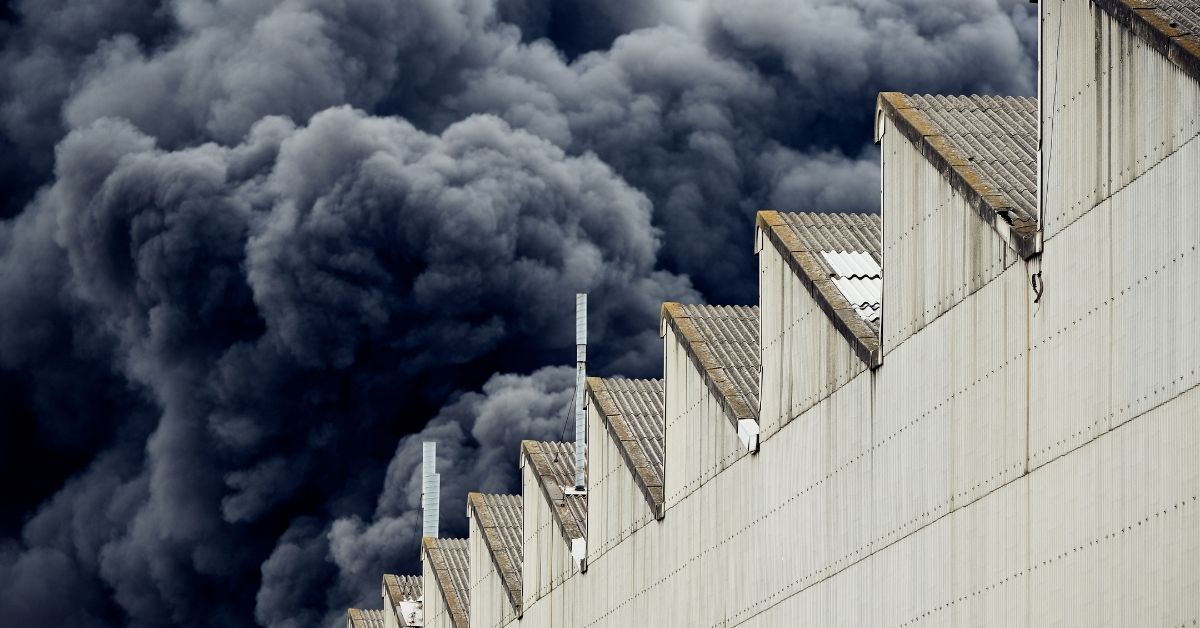Fall weather is finally here—a season of cooler air, colorful leaves, and cozy gatherings. But as beautiful as autumn can be, it also brings unique challenges for our health. That’s why we’ve chosen this week’s topic: the “perfect storm” of factors that converge in fall to test your immune system. From the obvious culprits like less sunlight, fluctuating temperatures, and back-to-school germs, to the hidden stressors like indoor pollutants, holiday cooking fumes, and seasonal mold, your body has a lot to contend with this time of year.
The good news? Now is the perfect time to prepare your body and home for the cold and flu season ahead, so you can stay healthy, resilient, and ready to enjoy all that the season has to offer.
The Obvious Factors Impacting Immunity in the Colder Months
When most of us think about fall and winter health challenges, a few themes come immediately to mind. These seasonal shifts are easy to recognize, but they pack a real punch when it comes to immune resilience.
-
Less Sunlight Means Lower Vitamin D
As days grow shorter and the sun less intense, our exposure to UVB rays drops. That means our bodies make less vitamin D, which plays a role in immune function. Lower vitamin D levels have been associated with increased susceptibility to colds, flu, and other respiratory infections.1 -
Changing Temperatures
Frequent shifts from warm to cold (morning vs. afternoon, indoors vs. outdoors) strain the body’s ability to maintain homeostasis. Sudden cold can stress the respiratory system, making it easier for viruses to take hold. Also, dry cold air (or heated indoor air) dries out mucous membranes, reducing their ability to trap pathogens.2 -
Back to School / Spread of Illness
Kids go back to school in late summer/ early fall which translates to more indoor group time, mingling, and sharing of germs. Viruses that circulated less in summer come back—think colds, RSV, and flu. Increased social contacts = increased exposure. -
Holidays + Sugar Overload
Between tailgating for football, Halloween, Thanksgiving, and all the baking & sweet treats that come, people tend to consume more sugar. High sugar intake can impair immune response, chronically increase inflammation, and feed some pathogens.3
These seasonal “usual suspects”—less sunlight, temperature swings, crowded schools, and sugar-laden holidays—create a foundation of stressors that challenge our immune system every fall. And while they’re obvious enough to anticipate, their combined impact can still leave us run down if we don’t take proactive steps to support our health.

The Not-So-Obvious—Hidden Stressors
Beyond the seasonal challenges we expect, there are also less obvious factors that can quietly chip away at your immune defenses. These hidden stressors often build up in the background, making fall a more difficult season for your body to navigate than many people realize.
-
Closed Windows & Concentrated Chemicals
When it's cooler, we close windows to hold in warmth. That also traps indoor air pollutants: smoke, VOCs (volatile organic compounds) from cleaning or cooking, off-gassing from candles/air fresheners, etc. The New Yorker highlighted how cooking a big holiday meal can release significant levels of pollutants, sometimes higher than outdoor smog, and cause what is known as an “airborne toxic event.”4 -
Fall Mold & Moisture
Damp leaves outside and moisture inside create the perfect environment for mold. Mold spores can worsen allergies, asthma, and immune stress—particularly problematic for children, seniors, or those with chronic respiratory conditions5. -
Increased Exposure to Indoor Pollution
Aside from closing windows and reducing airflow, there are additional sources of indoor air pollution which are in-use during cold weather. Fireplaces, gas stoves, and heaters kick back on, adding particulates, nitrogen oxides, and even carbon monoxide indoors. Combined with dust and dander buildup, this can irritate lungs and make respiratory systems more vulnerable. -
Stress—Back to School, Work, Holidays
Emotional, mental, and financial stress ramps up in autumn: new routines for school, preparing for gatherings, and holiday obligations. Chronic stress weakens immune responses and shortens sleep, both of which increase susceptibility to infections.
While these factors aren’t always top of mind, they can be just as taxing on the immune system as the more obvious seasonal culprits. Taken together, indoor pollutants, mold, and stress form a subtle but significant burden on the body—especially for children, older adults, or anyone with respiratory conditions. Recognizing these hidden stressors is the first step toward managing them and building resilience throughout the colder months.

Why It Hits Some Harder
While fall brings challenges for everyone, not all immune systems respond the same way. Age, health conditions, and overall resilience play a big role in how well the body can handle seasonal stressors. For certain groups, autumn’s “perfect storm” can feel more like a direct hit.
Children: Their immune systems are still developing, making them more susceptible to seasonal colds and flu. Add in crowded schools and playgrounds, subtract consistent hygiene like washing hands or covering sneezes, and infections spread easily.
Seniors: Aging immune systems respond less robustly, and seniors are at higher risk of complications from respiratory infections. Poor indoor air can also exacerbate heart or lung conditions.
People with Respiratory Conditions: People with asthma, COPD, or allergies may experience flare-ups from mold, cold air, or indoor pollutants, making fall especially challenging.
Immunocompromised Individuals: Whether due to illness, medication, or recovery from treatments like chemotherapy, their bodies may not fight off pathogens effectively—making reduced exposures, cleaner air, and balanced nutrition especially important.
Recognizing who is most vulnerable helps families and caregivers take proactive steps. Whether it’s protecting kids from playground germs, reducing indoor air pollutants for seniors, or supporting those with chronic or immune-related conditions, small choices can make a big difference in keeping loved ones safe and healthy throughout the season.
How to Combat the Fall Immune Storm
Understanding who is most vulnerable—children, seniors, and anyone with respiratory or immune challenges—makes it clear that fall is not a season to take lightly. But the truth is, even the healthiest among us feel the effects of shorter days, shifting weather, and increased exposure to indoor pollutants and stress. The good news? With a few intentional steps, you can strengthen your defenses, create a healthier home environment, and help your family sail more smoothly through the months ahead.
|
Category |
What You Can Do |
|
Ventilation & Indoor Air Quality |
Open windows briefly to refresh air, use kitchen fans when cooking, and consider Austin Air purifiers with Certified HEPA Material and activated carbon to reduce particles and allergens. |
|
Sunlight / Vitamin D |
Get outdoor daylight whenever possible; supplement if advised by your healthcare provider. Include vitamin D–rich foods like salmon, fortified milk, or eggs. |
|
Cleaning |
Choose low-VOC or natural cleaners, ventilate during use, and avoid heavy reliance on artificial scents. For families with young children or immunocompromised loved ones, these small steps can make a big difference. |
|
Humidity & Mold |
Maintain indoor humidity between 30–50%. Run dehumidifiers in damp areas, clean leaves/debris around the home, and fix leaks quickly. |
|
Nutrition & Balance |
Prioritize fruits and vegetables that are high in vitamin C, as well as foods with omega-3 fatty acids. Keep sweets for celebration but balance with nutrient-dense meals. Kids and seniors benefit especially from consistent, nourishing diets. |
|
Sleep, Stress, Movement |
Keep regular bedtimes (critical for kids and older adults), fit in light activity even indoors, and try stress-reducing practices like deep breathing or short walks. |
Final Takeaway
Fall may bring cooler days, cozy gatherings, and colorful leaves, but it also carries a unique mix of stressors that can test your immune system. From less sunlight and fluctuating temperatures to hidden threats like indoor pollutants, mold, and stress, it truly is the “perfect storm” for your health. And while children, seniors, and those with chronic or immune-related conditions are especially vulnerable, none of us are immune to the season’s challenges.
The good news is that small, intentional choices can make a powerful difference. Opening a window for fresh air, swapping harsh cleaners for gentler alternatives, adding more fruits and vegetables to your meals, or making time for rest and stress relief—each one is a step toward greater resilience. Think of these habits as simple investments in your well-being and in the health of the people you love.
Another powerful step is improving your home’s air quality. Cooking, cleaning, and simply living indoors can release pollutants that strain your respiratory system and weaken immune defenses. Austin Air purifiers, equipped with medical-grade Certified HEPA Material and activated carbon, are designed to remove allergens, chemicals, and airborne particles — creating a cleaner, safer environment for your family to breathe easier all season long.
Our new Immunity Machine has been released just in time for the cold weather—it has 8-phases of air purification, including HEGA cloth which can trap and neutralize viruses that cause respiratory ailments. Immunity Machine filters are also available for folks who already have an Austin Air Purifier.
To learn more about immunity and air quality issues, check out the "Invisible Enemies” webinar hosted by Austin Air back in April, it was a major inspiration behind the new Immunity Machine.
With a little preparation, mindfulness, and the right tools, you can protect your body, support your immune system, and truly enjoy all the warmth, beauty, and connection that fall has to offer.
REFERENCES
1 Vitamin D (March 2023). The Nutrition Source. Harvard Chan School. https://nutritionsource.hsph.harvard.edu/vitamin-d/.
2 Di H, Taha MS, Nocera AL, et al. (2022 December 6) Cold exposure impairs extracellular vesicle swarm–mediated nasal antiviral immunity. Journal of Allergy and Clinical Immunology. 151(2):509-525. doi: 10.1016/j.jaci.2022.09.037.
3 Shomali N, Mahmoudi J, Mahmoodpoor A, et al. (2020 June 8). Harmful effects of high amounts of glucose on the immune system: An updated review. Biotechnol Appl Biochem. 68(2):404-410. doi: 10.1002/bab.1938.
4 Twilley, N. (2019 April 1). The hidden air pollution in our homes. The New Yorker. https://www.newyorker.com/magazine/2019/04/08/the-hidden-air-pollution-in-our-homes.
5 What makes indoor air unhealthy? (2025 July 9). American Lung Association. https://www.lung.org/clean-air/indoor-air/indoor-air-pollutants.



